Mastiff Lab Mix: Meet The Mastadors
The Mastiff Lab mix is a large designer cross breed, combining the English, Spanish or Bullmastiff with the Labrador Retriever.
This breed combination surprises some as they have historically very different purebred ancestors. One designed to protect property and the other to fetch game in the field.
To drill down to the realities of life with the Mastiff Lab mix we’ve interviewed 15 Mastador parents to get the scoop on this curious cross breed.
- Meet the Mastadors and their owners.
- Coat care, shedding and grooming.
- Temperaments and training.
- Pros and cons of life with your Mastiff Lab mix.
An Important Note
Survey responses aren’t as straightforward as they seem. Puppy parents are more likely to fill them in if they’ve had an extreme experience, whether that’s good or bad. So we’re more likely to see highlights of the top and bottom of the pile when it comes to our results.
Take their thoughts and advice as they come. Real experiences, from actual owners who have had years to get to know their dogs and the challenges and highs that come with them.
Meet some of the Mastadors!
Let’s get to know a few of our survey responders before we carry on. Introduced (mostly!) in their own words:
Ruby (owner Megan)
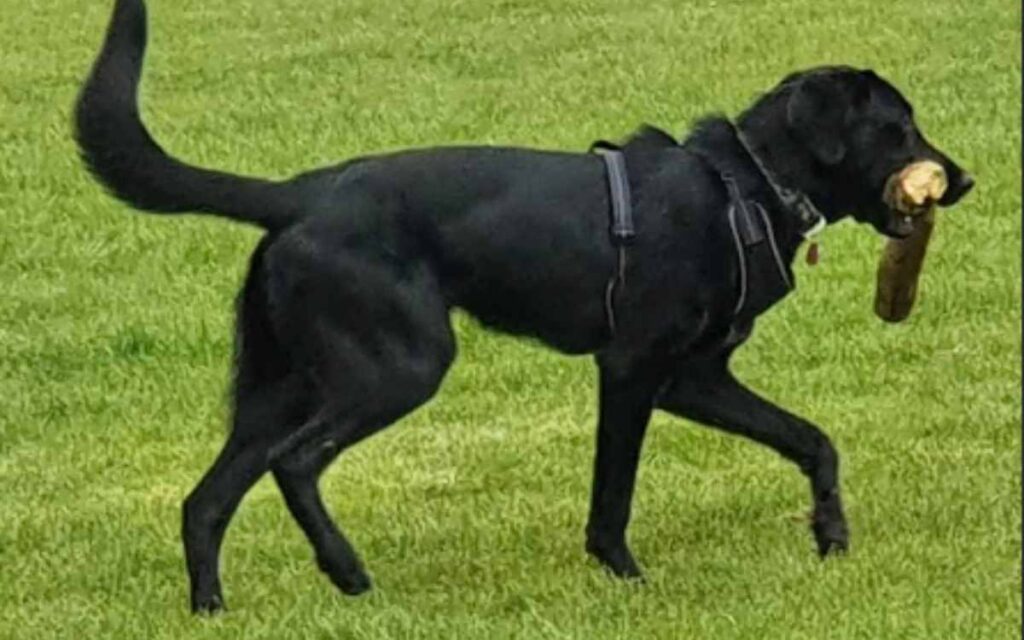
Megan’s dog Ruby is best described as Goofy. A black, female, 2.5 year old dog, she has no markings on her coat and she looks like her mum who is a Labrador.
Ruby is a bouncy puppy who absolutely adores attention and love. When making her dinner she does what we call a happy dance. Her bum and back legs move and the front don’t. She’s the biggest, sweetest and kindest girl. She is great with kids and just loves her brother.
Ruby is very protective and barks when a bit of trash is blew past the house. Ruby is very excitable and energetic which can be worrisome for other dogs and owners. Ruby has a huge group of friends that go walks together which range from Jack Russel to German Shepherds.
Ruby just wants love and friends. She is very gentle with smaller dogs and is very material and likes to look after them.
Mousse (owner Mike)
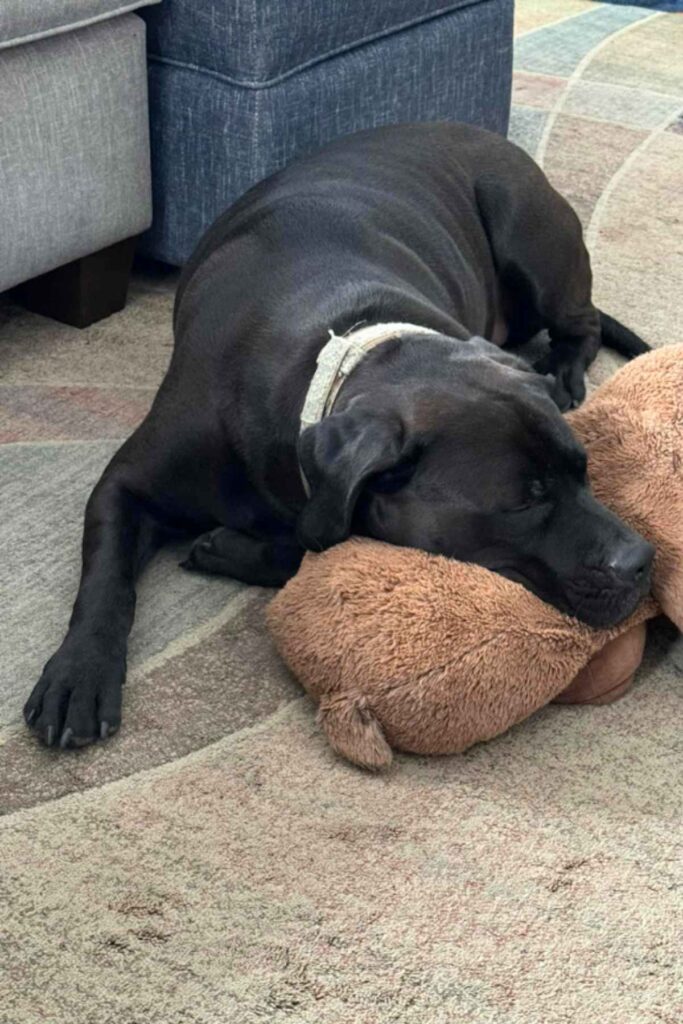
Mousse is a Bullmastiff Lab mix, a black dog with faint brindle markings that shows in the sunlight. He looks like a Lab with a Bullmastiff head. At 3 years old he is very vocal, sighs, whines, cries and is a leaner. Needs to be touched constantly.
Friendly Juno

Friendly Juno is a 2.5 year old female English Mastiff Lab mix. She’s black with a brown tint in sun. Very Lab like but small white mark on chest.
Juno has been a nightmare puppy and would chew everything, extremely over excited and over friendly. She loves to play with other dogs but forgets she is big and can send small ones flying by accident. She learns best from my son who is 13 and follows him everywhere. She has always been stubborn for everyone else but for my son she will do any trick, sit, walk perfectly etc straight away.
She walks perfectly for him on lead and off but not with anyone else. She is now 2 1/2. I would say she matured overnight about 3 months ago. She is calmer, doesn’t jump up at people and seems like something just changed and she stopped chewing, being over the top etc. She is definitely a mediator and when my other dogs get over the top playing she will jump in the middle and push one away, leading him into another room.
Rocko -(owner Christopher)

Loyal Rocko is a 9 year old Spanish Mastiff Lab mix. He’s black Labrador like, but very tall and heavy set. Rocko is great with any dog of any sex. He loves children and is good with cats, non aggressive.
Bruce (owner Gillian)
Loyal male English Mastiff Lab mix, Bruce, looks like an overgrown black Labrador most of the time. When he’s on alert (eg if someone knocks the door) or if he’s told to do something he doesn’t want to do then his expression becomes more Mastiff. His size is certainly more Mastiff (76kg).
Bruce is without doubt the best dog I’ve ever had. Extremely intelligent, so very loyal and very gentle. He loves routine. He’s quite lazy, and will do anything for food! He loves to be with people and is very affectionate. Brilliant with children, very gentle but his size can be problematic with small children.
Common Personality Traits
Almost every single survey responder described their Mastiff Lab mix as loving and a food lover too! Which bodes well for training using positive reinforcement based methods.
Other highly rated characteristics in descending order included:
- Gentle
- Likes to be together
- Loves everyone
- Loves children
- Bouncy
- Protective
Next in the ratings for personality traits included around a third of the Mastiff Lab mix owners categorising their dogs as:
- Energetic
- Calm
- Relaxed
- Excitable
- Independent
- Confident
Interestingly several survey responses gave their dogs as being both calm and energetic, which suggests different behaviors depending on the context.
Only a few very owners described their Mastador as being keen to please, submissive or reactive.
We asked our owners – Does your dog’s coat need any special or regular care?
Almost all our Mastiff Lab mix owners described their dogs as having similar grooming needs to your average Labrador. They were high shedders, which needed at minimum an occasional grooming session.
Most of them were happy to be bathed or showered as required, and one suffered from dandruff.
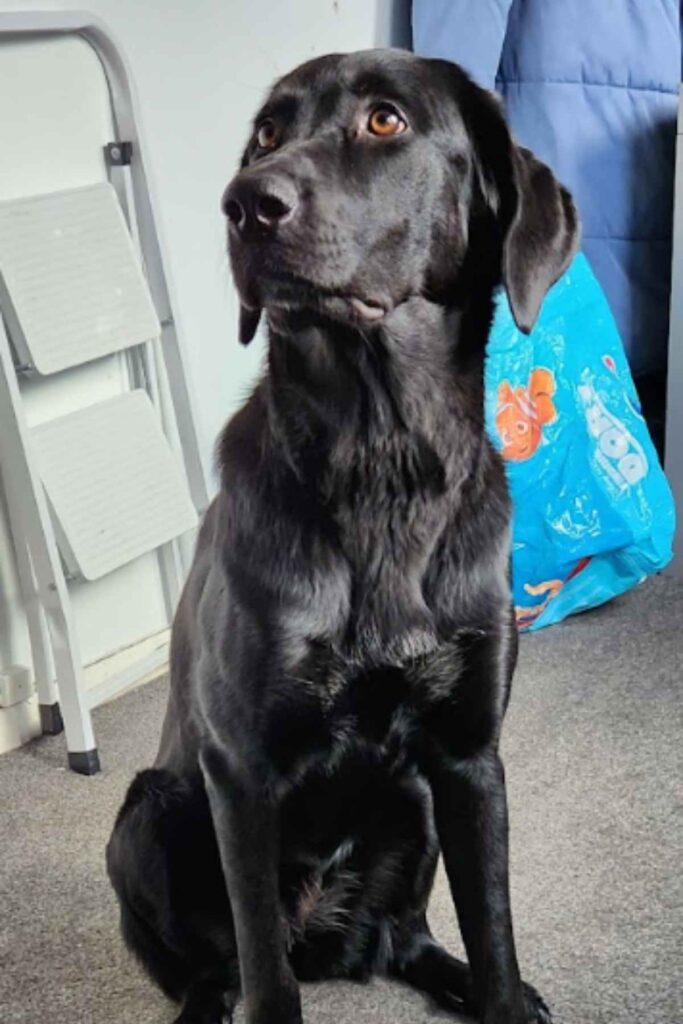
Have you done much training with your pup? Would you say they are easy or hard to train?
As with all dog owners, we got a huge range of experiences in training Mastiff Lab mixes. Having reviewed some quite detailed survey responses, it seems clear that those who had the most success took advantage of their dog’s enthusiasm for food and used reward based training.
Some of our dogs had a long list of commands, others had owner that hadn’t felt the need to priortise training beyond puppyhood as their dogs were just generally biddable.
Only two owners described their dog as stubborn, and several were happy to report that training was an easy process.

Is your dog happy to be left home alone for a few hours, a few times a week?
None of the owners surveyed felt that their dogs suffered from separation anxiety, though a few understandably saw signs that their dogs weren’t best pleased with time spent alone.
Those owners with multiple dogs had no issues, and those that did effectively used toys or crate training when their dogs were left solo.
Looking at health
There were three issues that came up more than once in our surveys. One was bone cancer in old age, the others were lifelong ear infection problems and ease of weight gain.
However, the majority of owners happily shared a lack of health issues in dogs that were at least a few years old, which was encouraging.
Is there anything you find hard about life with your dog?
Although some Mastiff Lab mix owners find life with this mix fairly hassle free, there were some repeated causes for mild concern.
The shedding, drooling and mess were frequently reported on. Some issues with resource guarding, noise and slow maturity rate also came up. Along with the usual more Lab-like reports of issues with a bit of bounciness.
There were also several owners who felt at times that others had an issue with being intimidated by the Mastiff Lab mix’s size, despite good behavior.
What do you love most about life with your dog?
There is a lot to love about life with a Mastiff Lab mix, according to our survey responses. Cuddly and playful came up a lot. Owners generally found life with this mix a pleasurable, entertaining experience with a good dose of loyalty.
Lastly…is there anything you think prospective owners should know, about life with this Lab mix?
I’m delighted to share some final thoughts from our Mastiff Lab mix owners about life with these mixed breed dogs:
Gabriel, Bleu and Journey
They’re hearty and all heart. They will sport, guard, play and hangout. With their balance of active and protective, if you’re not going to make them a part of your life, you should probably leave this mix alone.
Ruby
Do lots of research and ensure you know everything about life with a Lab mix. I was uneducated at the start which i would not recommend. Please research and ensure you understand everything to a t.
Mousse
Vet bills , food bills and poop are on the big side. And let’s not forget the flatulence and the snoring!
Bubba
They are BIG, they can be stubborn, your house will have slobber stains everywhere, you will never have a more affectionate dog.
Alvin
They drool alot and do not like to share the bed but you will have endless love and never be cold because they think they are lap dogs
Juno
Think lab energy and friendliness with mastiff stubborness and one man dog that comes on a 45kg dog. Then remember that you have 2 years of that. But… Once those adolescent times pass, they are absolutely perfect and an absolute pleasure.
Rocko
You will not regret it but as with all xl dogs tend to have a shorter life span
Ozzy
Although they don’t need lots of walking because of the massive side an hour a day, I would say they do crate training Ozzy hasn’t been as they do get anxious when left alone and will destroy things.
Bruce
They are unbelievably strong and powerful. You need a strong arm to hold that lead!
Hector and Douglas
No two dogs are the same. I’ve had two and they were/are worlds apart. Moderately easy to train but not one for an inexperienced person.
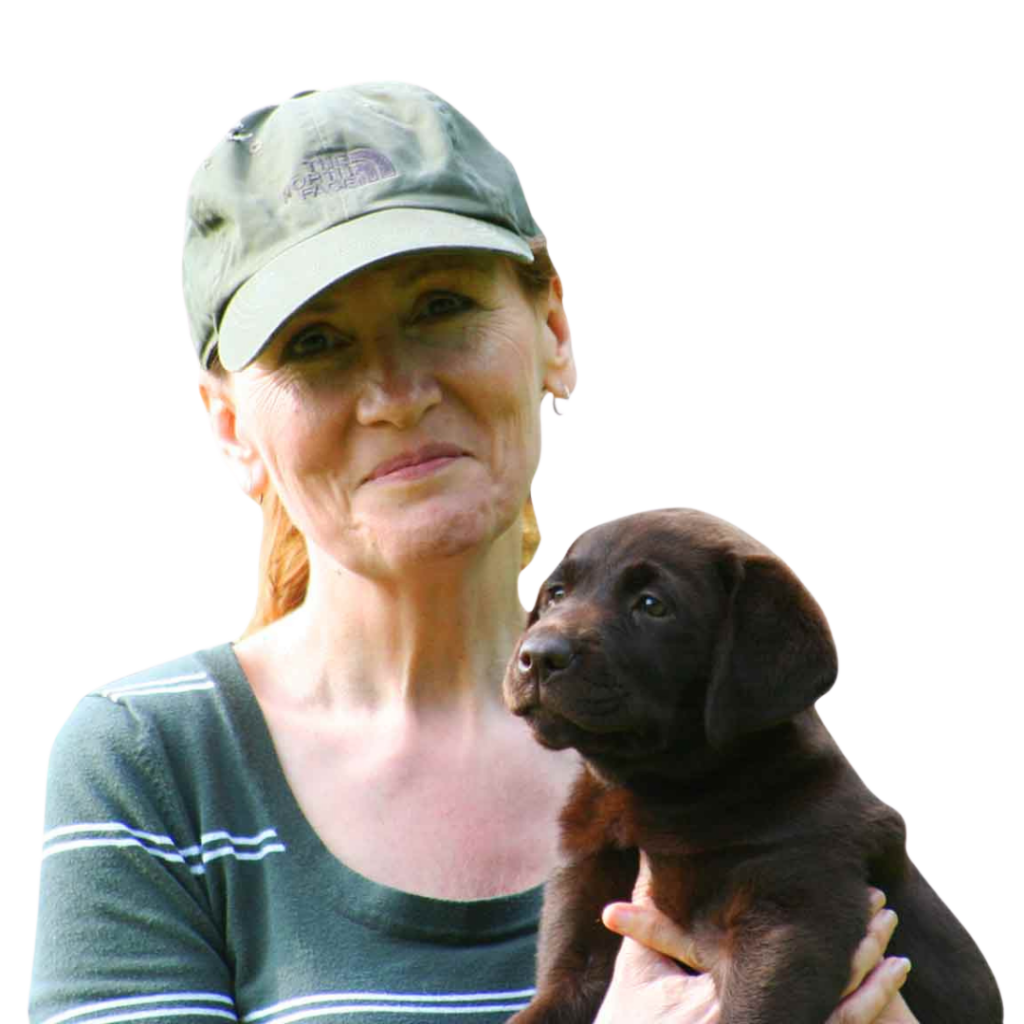
Free Labrador Updates!
Get my training tips, news, reviews, and the latest from The Labrador Site delivered to your inbox
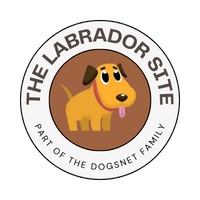
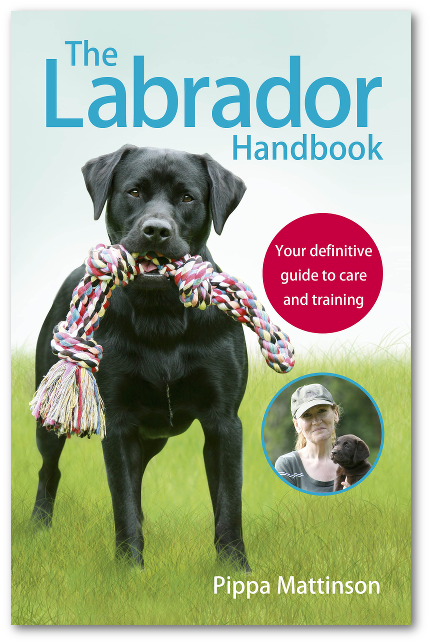

My wife and I have a lab/french mastiff, although she’s stalky she looks very black lab. The difference I see is the wider front stance and the larger chest muscle. She’s a great dog but as I read stubborn is a very good description, If she doesn’t want to she won’t. As for the kids thing well when we got her as a pup our kids were already teens so babies were not known to her for a while. It would seem she’s good with kids around 4 years and up. But anyway to make a 7 year story short. she isn’t fond of babies, she doesn’t like chaos, she’s actually mostly lazy, she has a little friend who’s a terrier and a terror but the two play together all the time. It’s funny to watch a dog no larger than the others head and neck go at it all tough and brave when it would only take one good chomp and that’s it, But they’re good pals and play alot, that’s when you see her youthful lab side come out, it’s quite funny at times. In finishing thank you for the info it’s rather helpful.
I currently have a Mastador that has been trained for senior living facilities which we own. Our first Mastador and acquired it from two farm dogs that breed. I’m looking for suggestions on reputable breeders to purchase another Mastador and that could help identify the mellow characteristics that we need for senior living companionship. Any recommendations would be appreciated.
We had a Mastadore for 14 years. She was a great dog very well trained. We could lat her out and she would not leave the yard. I hooked on this breed and looking for another one.
My 5yr old bull mastidor is called D’Arcy. We keep a strict watch on her weight as she has had both cruciates explode and successfully operated on. She looks great at 37, 38 kg.
She loves children, she sits with my niece’s and nephew and plays with them. Only concern with little kids is her size and spacial awareness she could knock them down. She indicates 10 mins before I get a migraine.
Summary : great family dog, 2 x 45 min walks a day, depending on genetics and on development of bones and joints decent health. Patient, bit stubborn, food oriented, gentle, amazing with naughty puppies.
Yes I have read the same. The mastador is a lab english mastiff mix not bull mastiff. But i suppose all mastiff lab mixes could be called a mastador. Having been bred since the1950s it’s interesting that they are not featured in any dog book that includes designer or mixed breeds.
My mastador began as my college daughters dog; I became the owner when she could not take him to grad school. Riley is currently …6 years old? In the house, he likes to steal my grandchildrens toys that squeak and run off – grandkids hot on his tail. My grandson, the first day he met Riley (yellow in color) he took out of Riley’s mouth a new rawhide bone – Riley just looked at him, that was it. Riley became very protective of my grandchildren and when another dog (inherited from a son who also could not take his dog to grad school – do you see a pattern here?) – so when the other dog came close to my grandson (who was in his highchair tossing food to Riley every so often) so my other dog walked between Riley (on highchair duty) and the highchair – Riley took him to the floor instantly.
The problem with my Mastador – he has become overly protective. He tries to “save” my grand children when they are in the pool so I have to keep him locked in the house. He has very large, sharp teeth.
Me – I am crippled and have seizures. Riley is in-tune with me and knows before I do when I am about to have a problem; he saved my life in 2017 by sitting in front of me and looking at me and then my wife all the while whining. My wife did not know what to do as 2 days prior a local ER said I was fine – I wasn’t and Riley knew it thus I am here today.
Riley has become increasingly protective and has bit my wife twice. Neither time was it the dogs fault, my bride thinks Riley is a sweetheart (which he is) but he is also large and ferocious. Never put your hand around the face of a dog that wants to attack even when he wants to protect you.
So – mastador is lovable, good with children, protective – to a fault.
My 13 week matador plays hard with out other two digs.Is it normal for him to limp.He was favoring a front leg two weeks ago.now one of his back legs..This has been goi g on for 4 days now..I’m concerned.
The mastador breeds I am aware of are lab and English not bull mastiffs